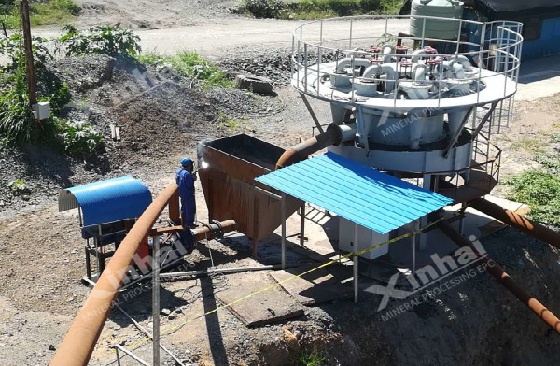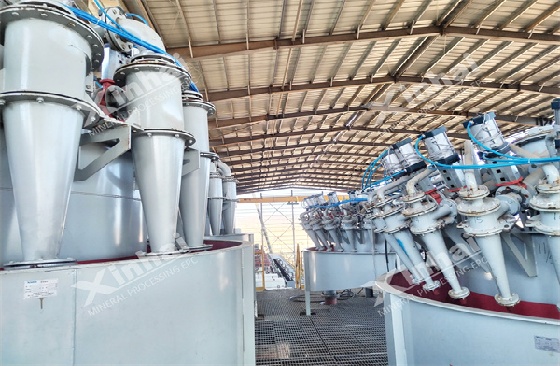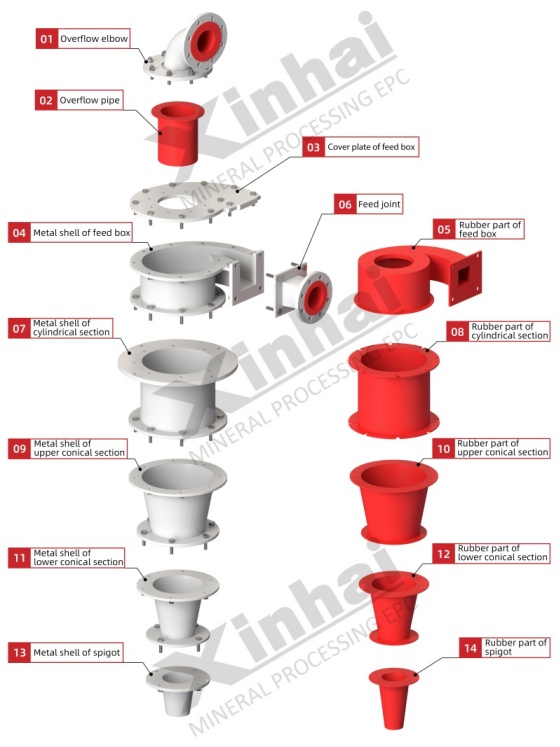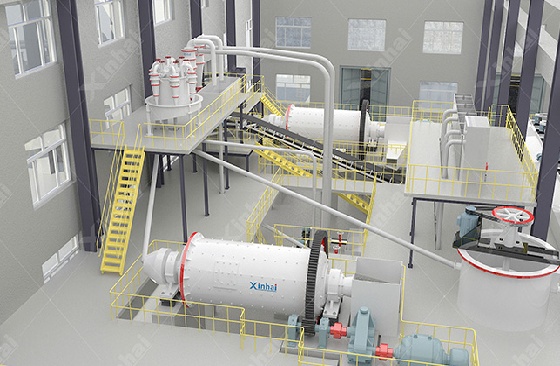If you want to know more information (such as product/process price, etc.), please contact us 24-hour telephone
The global mining industry is changing quickly—green mining isn’t just a cool trend anymore. It’s something you can’t skip if you want to stay in business long-term. Governments are cracking down, investors are asking tough questions, and local communities won’t stand for messy operations. On top of that, water and energy costs keep going up, so mines have to find smarter ways to work. But there’s one big problem holding things back: figuring out how to handle tailings in a way that doesn’t hurt the planet.
Tailings—those fine bits of waste left after processing ore—are usually stored as a soupy mix in huge ponds. These ponds take up way too much land. They waste tons of fresh water. And honestly, they’re kind of scary—if a dam breaks, those toxic chemicals can ruin rivers and kill wildlife. To fix this, mines need two things: a way to get water out of tailings efficiently, and a way to reuse that water. That’s where hydrocyclone separators come in. They’re small, work really well, and don’t use much energy. They’re basically the secret weapon for making tailings management sustainable.

Tailings slurry is tricky to deal with. It’s 60 to 80 percent water. It’s full of tiny particles—so small they’re hard to filter out. And mines make tons of it every day. This causes three big headaches for mines trying to go green:
Traditional tailings ponds are massive. They can cover hundreds of acres—land that could be used for farms, homes, or wildlife. And they’re not safe. Even a small crack can let toxic metals like lead or mercury leak into nearby streams. Remember the Brumadinho disaster in Brazil? That tailings dam failure killed over 200 people and destroyed whole ecosystems. Cleaning that up cost billions. It’s not just a “what if” scenario—it’s a real danger.
Mines need water to wash ore, grind it up, and separate out the good stuff. But most of that water ends up in tailings ponds. Then it either evaporates into the air or seeps into the ground, never to be used again. In dry places—like the Atacama Desert in Chile, where some of the world’s biggest copper mines are—water is already super scarce. Wasting it on tailings ponds isn’t just bad for the environment. It can make it impossible to keep the mine running when local water sources dry up.
The rules are getting stricter, and fast. Groups like the International Council on Mining and Metals (ICMM) now make mines follow tough standards for tailings. Governments in places like Canada and Australia are even banning new tailings ponds in sensitive areas. And investors? They’re checking ESG (Environmental, Social, Governance) scores like hawks. If your mine has a bad track record with tailings, good luck getting the money you need to expand or upgrade.
So what’s the fix? Two things: tailings dry stacking (turning that soupy mix into something you can stack like dirt) and reusing the water you pull out. And hydrocyclone separators make both of these possible. It’s not rocket science, but it works.

Hydrocyclones are simple, but man, do they get the job done. They don’t have any moving parts—no gears, no motors, nothing that spins. They just use centrifugal force (that’s the same force that pushes you to the side when a car turns fast) to split solids from liquids. And they do it in seconds. Here’s how:
Feed Inlet: The tailings slurry gets pumped into the hydrocyclone from the side, not the top. This makes it spin around really fast inside—like water swirling down a drain, but way more powerful.
Cone Section: The cyclone gets narrower as it goes down, like a cone. This makes the spinning speed up. The heavy solid particles get pushed out to the walls, while the lighter water stays near the middle.
Underflow: The thick, goopy stuff—now 50 to 70 percent solids—comes out the bottom through a small hole called the “spigot.” This thickened tailings can then go to a filter press or a dryer to get even drier, or just get stacked up like dirt.
Overflow: The water-rich liquid—with only tiny particles left—rises up through the middle and comes out the top. This water is clean enough to use again in the mine. No more wasting fresh water on processing.
Hydrocyclones aren’t meant to do all the work by themselves. They’re usually put in before other equipment like thickeners or filter presses. Here’s why: slurry straight from ore processing is really watery—60 to 80 percent water. If you send that straight to a thickener, it takes forever and uses a lot of energy. Hydrocyclones thicken it up first, so the other machines can do their job faster and cheaper. It’s like straining pasta before you put sauce on it—makes the whole process easier.

Hydrocyclones aren’t just good for the planet—they save mines money, too. That’s a win-win, right? Let’s break down the benefits:
They can take back 30 to 40 percent of the water from tailings. That means mines don’t have to pull as much fresh water from rivers or underground wells. Let’s put that in numbers: a mine that processes 10,000 tons of ore every day can save up to 1 million cubic meters of water in a year. That’s enough to fill 400 Olympic-sized swimming pools. For mines in dry areas, this isn’t just a nice perk—it’s the difference between staying open and shutting down.
Since there are no moving parts, hydrocyclones use way less energy. We’re talking 0.5 to 1 kWh for every cubic meter of slurry. Compare that to centrifuges, which use 5 to 10 kWh for the same amount. And because there’s nothing to break—no motors or gears—maintenance costs are 50 to 70 percent lower. For a mine that runs 24/7, that adds up to hundreds of thousands of dollars saved every year. Who wouldn’t want that?
By thickening tailings and reusing water, hydrocyclones help mines follow the new rules. A coal mine in Indonesia started using them and cut their tailings discharge by 35 percent. That meant they avoided a $2 million fine. Plus, they didn’t have to build a new tailings pond, which kept the local community happy. Good for the planet, good for avoiding legal trouble—win-win.
Here’s how hydrocyclone systems compare to just using tailings ponds:
| Metric | Traditional Management | Hydrocyclone-Enhanced Management |
| Freshwater Use | 100 m³/ton ore | 65 m³/ton ore |
| Dewatering Energy | 8 kWh/m³ slurry | 1 kWh/m³ slurry |
| Tailings Volume | 100 m³/day | 45 m³/day |
| Annual Maintenance | $250,000 | $80,000 |
| Compliance Risk | High | Low |
Hydrocyclones work best when they’re made for your mine specifically. Every mine is different—different ore, different tailings, different problems. Xinhai doesn’t just sell you a machine. They build a solution that fits your needs.
Wear-Resistant Lining: The inside of the cyclone—where the slurry spins—gets beat up by sharp particles. Xinhai lines them with rubber, polyurethane, or ceramic. These materials last 2 to 3 years, instead of the 6 months you get with regular steel. That means less time replacing parts and more time mining.
Modular Design: You can stack them or group them together to handle lots of slurry—up to 10,000 cubic meters every hour. If your mine starts processing more ore, you can just add more cyclones. No need to tear everything out and start over.
Seamless Integration: They work smoothly with other Xinhai equipment—thickeners, filter presses, water treatment systems. It’s like buying a puzzle where all the pieces fit perfectly. No awkward gaps, no extra work to make them work together.

Xinhai doesn’t just drop off the equipment and leave. They help with everything, from start to finish:
Engineering: Their team comes to your mine, checks out your tailings, and tests different setups. They design a system that hits your goals—whether that’s saving 30 percent on water or cutting tailings volume in half.
Procurement: They find the best parts—no cheap stuff that breaks. You get equipment that lasts.
Construction: Their crew installs everything, and they work around your schedule. No shutting down production for weeks while they build.
Maintenance/Operation: They can train your team to run the system, or they can run it for you. Either way, someone’s there to fix problems fast if they pop up.
A lithium mine in Zimbabwe was in a tough spot. They were using 80 cubic meters of fresh water for every ton of ore—way too much. And their tailings pond was almost full. They were looking at a $5 million bill to expand it, or they’d have to stop mining. Then they called Xinhai.
Xinhai built a custom system with three hydrocyclones (lined with polyurethane to handle the tough lithium tailings). Here’s what happened:
Water recycling went from 40 percent to 70 percent. They cut fresh water use by 30 percent.
Tailings volume dropped by 25 percent. They didn’t need to expand the pond—saved that $5 million.
Energy use for dewatering fell by 75 percent. That’s an extra $120,000 saved every year.
It’s not a one-time thing, either. Xinhai does this for mines all over—gold mines in South Africa, copper mines in Chile. It works.
If you’re tired of dealing with tailings ponds, high water bills, or worried about new rules, Xinhai’s hydrocyclone solutions can help. They’ll build a system that fits what your mine needs—whether that’s using 30 percent less water, avoiding fines, or saving hundreds of thousands on maintenance.
Learn more about Xinhai’s tailings treatment and dewatering solutions. Contact us today for a free look at your site and a custom green mining plan. Let’s build a mine that’s good for the planet, good for your wallet, and ready for whatever comes next.